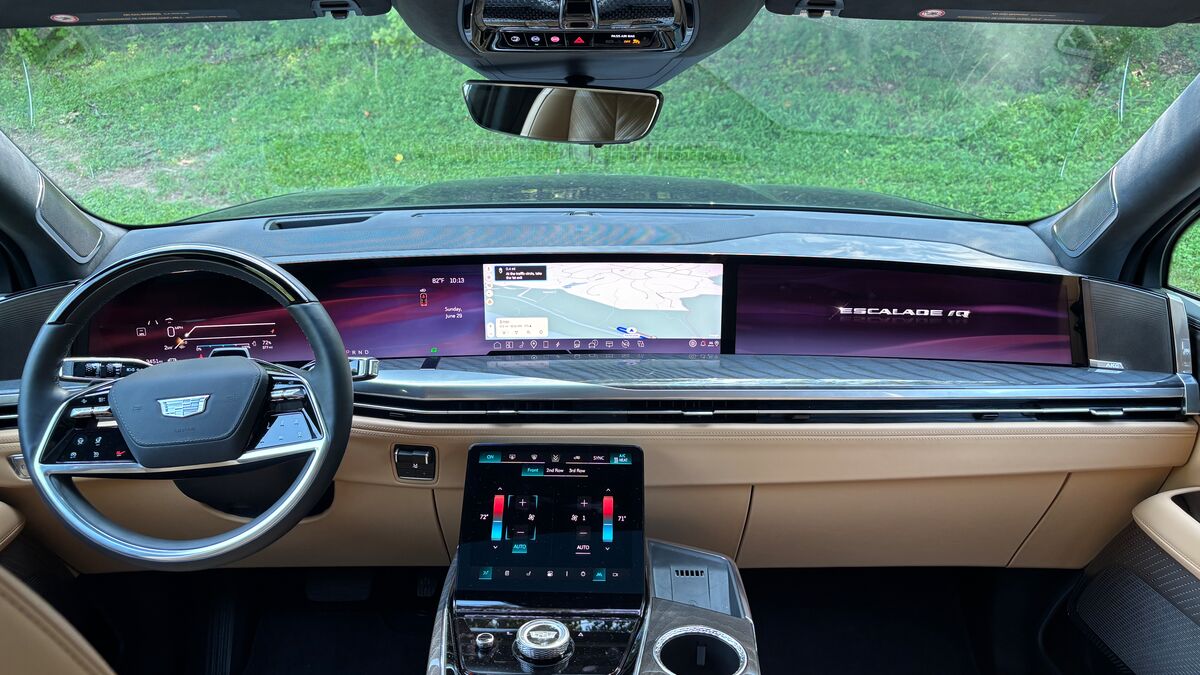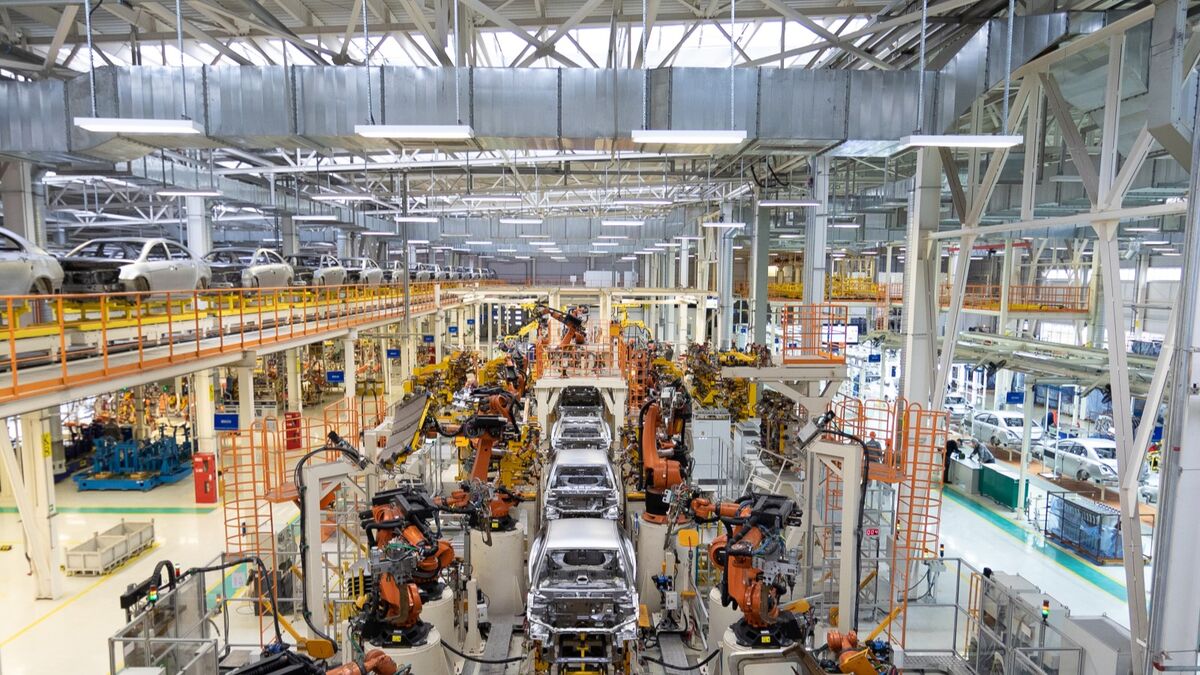- General Motors executives this week announced plans for a host of new technologies, from advanced self-driving systems to AI-powered in-car voice assistants
You climb into your Cadillac, set to meet friends at a bar downtown. It greets you and asks you where you want to go today.
You give it the destination fee or desination charge, and the car sets off on its way. You pull out your phone and check your email while it navigates itself to the meetup.
Sound like something out of 2035? 2028, actually.
General Motors this week announced plans to launch “hands-off, eyes-off” driving with the 2028 version of its Cadillac Escalade IQ.
Executives spoke to reporters at a curated event on GM’s future technology plans, where they promised several new technologies planned for the next few years.
Eyes-Off Driving
The headline of the event was a more advanced self-driving system that will appear first on Cadillac’s electric flagship.
GM is one of several automakers that, today, offer a partial self-driving system — what automakers call an Advanced Driver Assistance System (ADAS). GM calls its offering Super Cruise.
Related: Self-Driving Cars — Everything You Need to Know
Super Cruise works only on pre-mapped highways, but GM currently has mapped more than 600,000 miles of highway across North America. It lets you take your hands off the steering wheel and your feet off the pedals, but not your eyes off the road. Drivers must remain ready to take over when prompted.
It’s what automotive engineers call a “Level 2” ADAS system. In the U.S., only Mercedes sells something more advanced. Its Level 3 Drive Pilot system lets drivers look away from the road under limited circumstances, but it is legal only in two states.
Ford has a similar product, BlueCruise. Tesla’s system, known as Full Self-Driving (Supervised), is similar, but does not rely on external maps and works on many non-highway surface streets. Tesla’s approach has been controversial with safety experts and has been blamed for many more accidents than rival systems.
GM said that by 2028, Super Cruise will reach Level 3 and be ready to “deliver the next phase of personal autonomy.”
Conversational AI
Executives also promised an AI voice assistant that could conduct natural conversations with drivers. “Beginning next year,” the company said, Google Gemini will power an in-car AI assistant.
But GM will abandon the Google architecture, introducing its own AI “in the future.”
“With your permission, it will be fine-tuned with your vehicle’s intelligence and your personal preferences,” the company says.
Other automakers have pursued similar technology. Honda, at the 2025 CES consumer electronics show in Las Vegas, showed off a similar AI personality on its radically styled upcoming 0 Series electric vehicles (EVs).
Backup Power for Electric Grids
Today, most GM EVs can serve as battery backups to power a home.
“Soon,” the company says, “they’ll be capable of providing power back to the electrical grid.”
The company already sells a system that lets an EV tie into a home electrical system to serve as a backup battery in the event of a power outage. Such systems can be very expensive, but the company promises it will soon be “available via leasing, with terms to be announced later.”
Related: Vehicle to Home Bi-Directional Charging — What You Should Know
Some power companies have begun experimenting with the technology on a larger scale, using EV batteries as storage to balance the daily demands on an electric grid. In one prominent experiment, a North Carolina power company has picked up part of the cost of some EV leases in exchange for the right to use their batteries part time.
New In-Car Computers
Today’s cars operate thanks to hundreds of small, low-power microchips. Most manage just a few tasks, like raising and lowering windows or governing cabin temperature.
This has left supply chains vulnerable. When the COVID-19 pandemic shuttered microchip factories, automakers were forced to pause building some cars and strip features out of others.
GM this week announced plans for “a new centralized computing platform, starting with the Cadillac Escalade IQ. This will be a full reimagining of how vehicles are designed, updated, and improved over time.”
It will use “a single, high-speed computing core” to control everything “from propulsion and steering to infotainment and safety.”
This mirrors an approach taken by several rivals. Startup automaker Rivian pioneered it in recent years.” Global giant Volkswagen later made a $5 billion investment in Rivian to gain access to the technology.
Disclosure: Cox Automotive, the parent company of Kelley Blue Book and Autotrader, is a minority investor in Rivian.








